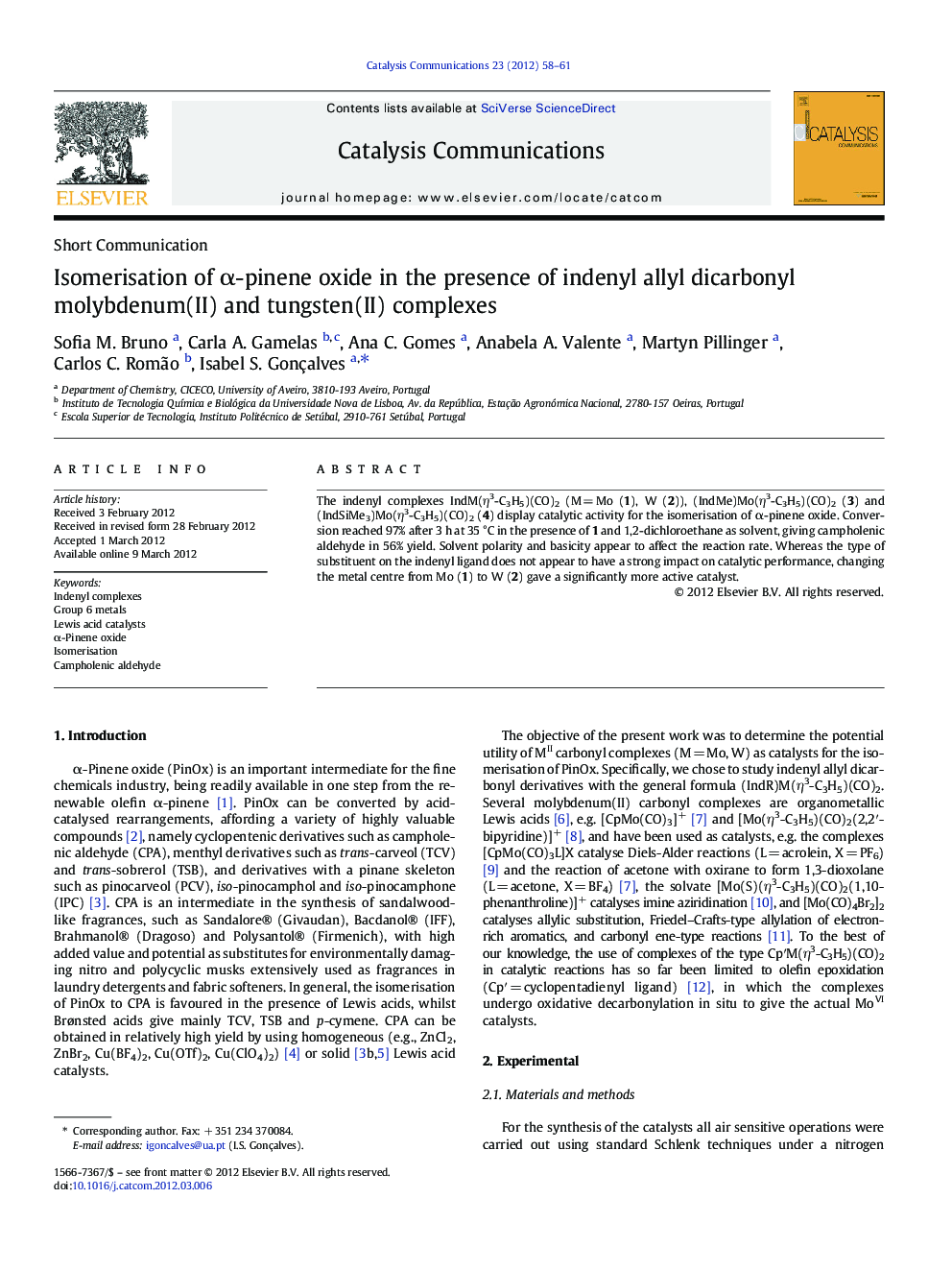| Article ID | Journal | Published Year | Pages | File Type |
|---|---|---|---|---|
| 50587 | Catalysis Communications | 2012 | 4 Pages |
The indenyl complexes IndM(η3-C3H5)(CO)2 (M = Mo (1), W (2)), (IndMe)Mo(η3-C3H5)(CO)2 (3) and (IndSiMe3)Mo(η3-C3H5)(CO)2 (4) display catalytic activity for the isomerisation of α-pinene oxide. Conversion reached 97% after 3 h at 35 °C in the presence of 1 and 1,2-dichloroethane as solvent, giving campholenic aldehyde in 56% yield. Solvent polarity and basicity appear to affect the reaction rate. Whereas the type of substituent on the indenyl ligand does not appear to have a strong impact on catalytic performance, changing the metal centre from Mo (1) to W (2) gave a significantly more active catalyst.
Graphical abstractFigure optionsDownload full-size imageDownload as PowerPoint slideHighlights► Indenyl allyl dicarbonyl derivatives catalyse the isomerisation of α-pinene oxide. ► Solvent polarity and basicity appear to affect the reaction rate. ► Campholenic aldehyde is the major product formed in ca. 55% yield. ► IndW(η3-C3H5)(CO)2 displays significantly higher activity than its Mo congener.
